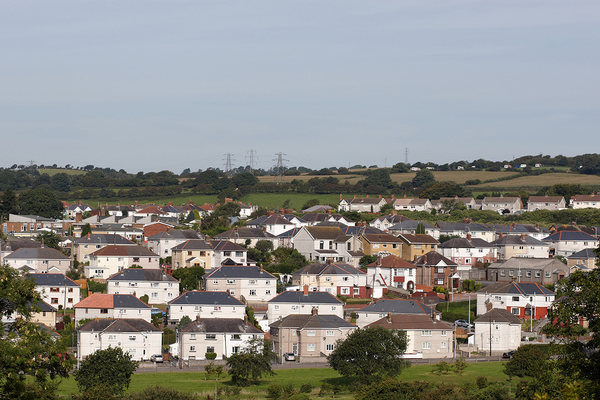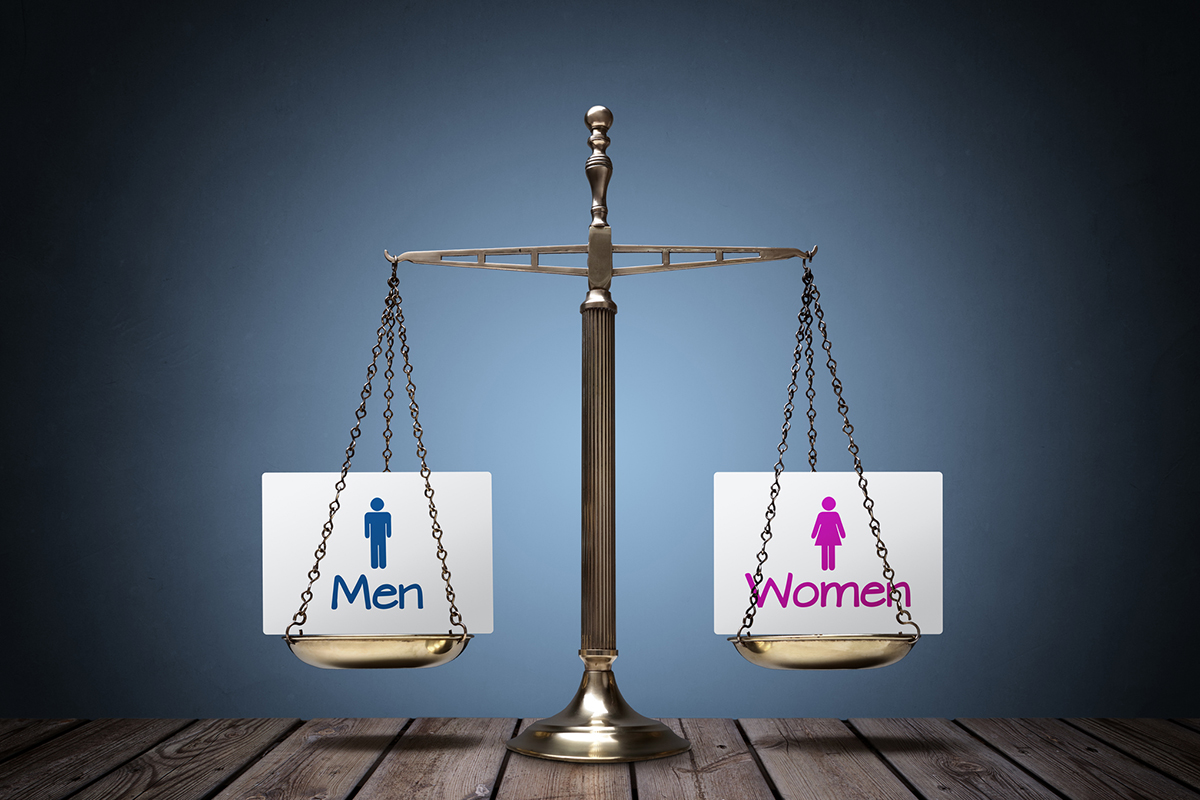You are viewing 1 of your 1 free articles
Six leading landlords exceed average gender pay gap
More than a quarter of the top 20 housing associations by stock owned have reported gender pay gaps larger than the national average.
Six landlords revealed mean gender pay gaps for 2016/17 above the average of 17.4%. A2 Dominion has the highest mean gap of 26%, followed by Metropolitan Housing Trust (23.3%) and Stonewater (23%).
The other three associations to record higher-than-average gaps were Orbit Group (19.5%), Sanctuary Housing Association (17.8%) and Your Housing Group (17.7%).
The government requires companies with more than 250 employees to reveal details of their mean and median pay gaps between male and female workers, with the full data published for the first time last week.
The smallest mean gender pay gaps were recorded by Clarion Housing Group (5%), Sovereign Housing Association (5.2%), The Guinness Partnership and Together Housing Group (both 6.4%).
Places for People had a 6.3% mean pay gap across its 11,000 staff, covering all services. On the government’s database, Places for People Group Limited reported a 39.8% mean pay gap, but the organisation’s structure means this figure only accounts for around 300 employees, generally in senior management roles.
On median gender pay gaps, sometimes viewed as a more accurate measure of pay discrepancy, housing associations performed better.
Only two of the top 20 landlords had a median gap bigger than the national average of 18.4%. These were A2 Dominion (20%) and Stonewater (22%).
Jenny Sawyer, director of people and organisational development at Stonewater, said: “As a socially responsible business, Stonewater is fully committed to equality in all aspects of our operations and we welcome the new reporting measures.
“In terms of our first audit findings, we believe the 2017 results stem from the different types of roles that men and women have within the organisation, and the salaries that these roles attract – as opposed to paying them differently for the same or equivalent work. Further reviews to validate this position are planned for 2018, including introducing a new pay framework, exploration of job evaluation methodology, development of a bonus payments policy and equal pay audits as core features of our reward strategy.
“Our assumption is supported by similar findings across the broader social housing sector and we remain committed to learning from and acting on our annual audit results. We work hard to retain talent and invest in all our staff, encouraging and supporting career development across the business.”
Anne Waterhouse, deputy chief executive at A2Dominion, said: “Our gender pay gap is significantly affected by the small number of women who make up our executive management team. Unlike our group board and at director level, where the balance is equal.
“Like others, our role as a housing association and property developer straddles multiple industries including construction and IT, where salaries are higher and roles are typically male-dominated. While we don’t have a direct influence over the resourcing pool within these industries, we are working on a plan that will help us to address the areas where we may need to make changes.
“Our employees and their careers are of the utmost importance to us and we already have a number of initiatives in place to ensure they enjoy a good work/life balance such as flexible working options including part-time and condensed working hours.”
Three housing associations reported negative median pay gaps, meaning the median pay of female staff was higher than that of male staff in 2016/17.
The trio were Places for People (-5.5%), The Guinness Partnership (-4.8%) and Clarion (-1.8%).
Gender pay gap
| Mean pay gap | Median pay gap | ||
|---|---|---|---|
| Clarion Housing Group Limited | 115,952 | 5% | -1.80% |
| Sanctuary Housing Association | 80,678 | 17.80% | 11.30% |
| London & Quadrant Housing Trust | 78,179 | 16.60% | 9.50% |
| The Guinness Partnership Limited | 64,482 | 6.40% | -4.80% |
| Places for People Group Limited | 60,117 | 6.30% | -5.50% |
| Sovereign Housing Association Limited | 51,504 | 5.20% | 7.20% |
| The Riverside Group Limited | 50,705 | 8.10% | 6% |
| Home Group Limited | 50,420 | 11.90% | 5.30% |
| Hyde Housing Association Limited | 48,045 | 12.90% | 4.10% |
| Orbit Group Limited | 40,562 | 19.50% | 10.20% |
| Together Housing Group Limited | 36,030 | 6.40% | 10.50% |
| Onward Homes Limited | 35,912 | 8.90% | 6.10% |
| A2Dominion Housing Group Limited | 34,259 | 26% | 20% |
| Gentoo Group Limited | 33,570 | 11.10% | 14.60% |
| Thirteen Housing Group Limited | 33,442 | 7% | 0.20% |
| Your Housing Group Limited | 32,942 | 17.70% | 15.60% |
| Metropolitan Housing Trust Limited | 31,226 | 23.30% | 14.80% |
| WDH | 31,202 | 10.90% | 11% |
| Midland Heart Limited | 30,789 | 19.20% | 15.50% |
| Stonewater Limited | 30,505 | 23% | 22% |
| National average | 17.40% | 18.4 |
“Our employees and their careers are of the utmost importance to us and we already have a number of initiatives in place to ensure they enjoy a good work/life balance such as flexible working options including part-time and condensed working hours.”
Three housing associations reported negative median pay gaps, meaning the median pay of female staff was higher than that of male staff in 2016/17.
The trio were Places for People (-5.5%), The Guinness Partnership (-4.8%) and Clarion (-1.8%).
Gender pay reporting explained
Under Equality Act regulations, employers (including housing associations) with more than 250 employees have until 4 April to publish information about their gender pay on their website and on a government website.
An employer must publish the results of six calculations for pay over a 12-month period:
- average gender pay gap as a mean average
- average gender pay gap as a median average
- average bonus gender pay gap as a mean average
- average bonus gender pay gap as a median average
- proportion of males receiving a bonus payment and proportion of females receiving a bonus payment
- proportion of males and females when divided into four groups ordered from lowest to highest pay.
The regulations specify how hourly pay, bonus pay and hourly rate should be calculated and in what circumstances agency workers and self-employed people should be included in the calculations
Results for individual organisations can be found on the government's gender pay reporting website here. Find results for housing providers by using the search boxes, or by filtering by sector.
More on the gender pay gap
Here are a few of Inside Housing’s articles on gender pay reporting:
Housing associations promise action following gender pay reports Major housing associations are revealed to have gender pay gaps of more than 25%
Welsh housing associations have 8% gender pay gap The data shows the extent of the gap between pay for men and women in Wales
Huge reverse pay gap at Scotland's largest housing association Full details of Scottish associations’ gender pay gaps – including a gap in favour of women at Glasgow Housing Association
Mind the gender pay gap To mark the deadline for gender pay gap reporting, we republished this piece by Kate Youde looking at the issues involved
A guide to gender pay reporting in the housing and care sectors Emma Burrows of Trowers & Hamlins explains more about what is required and the trends seen so far
Gender pay reporting should be the first step in a wider employment review Siobhan Fitzgerald of law firm TLT argues gender pay reporting is an opportunity for broader change
Homes England pledges to combat ‘unacceptable’ 18.4% gender pay gap The chief executive of Homes England brands the 18.4% gender pay gap at the organisation “not remotely acceptable”















